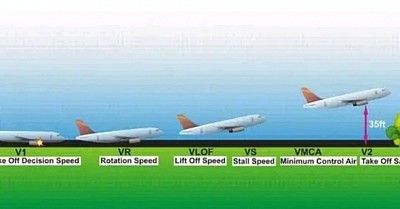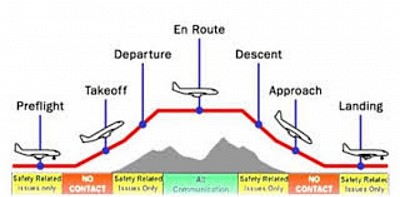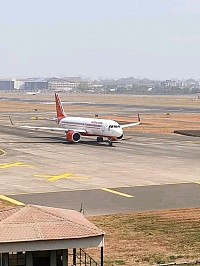PILOT NEWS
Starting your pilot training is an exciting and rewarding journey. Here are steps to help you begin your pilot training:
1. **Research Flight Schools**: Explore different flight schools or aviation training centers in your area or within a reasonable distance. Look for schools with reputable instructors, well-maintained aircraft, and a comprehensive training curriculum.
2. **Meet Medical Requirements**: Ensure you meet the medical requirements to obtain a pilot's license. Schedule a medical exam with an aviation medical examiner (AME) to assess your health and fitness for flying.
3. **Choose Your Pilot's License**: Decide what type of pilot's license you want to pursue, such as a private pilot license (PPL), commercial pilot license (CPL), or airline transport pilot license (ATPL), based on your career goals and aspirations.
4. **Find a Certified Flight Instructor (CFI)**: Select a qualified and experienced certified flight instructor who will guide you through your training, provide instruction, and help you progress through the required flight hours.
5. **Enroll in Ground School**: Enroll in ground school classes to study aviation theory, regulations, navigation, meteorology, and other essential subjects. Ground school prepares you for the written knowledge tests required for your pilot's license.
6. **Flight Training**: Begin your flight training with your CFI, where you will learn practical flying skills, maneuvers, emergency procedures, and flight planning. Accumulate the necessary flight hours to qualify for your chosen pilot's license.
7. **Pass Knowledge Tests**: Prepare for and pass the FAA written knowledge tests corresponding to your pilot's license. These tests assess your understanding of aviation theory and regulations.
8. **Flight Test Preparation**: Practice flight maneuvers, navigation, communication procedures, and emergency protocols in preparation for your practical flight test, also known as a checkride.
9. **Take the Practical Test**: Schedule and complete a practical test with an FAA-designated examiner. This test includes an oral examination and a flight evaluation to demonstrate your flying skills and knowledge.
10. **Obtain Your Pilot's License**: Upon successful completion of the practical test and meeting all requirements, you will receive your pilot's license, allowing you to fly solo or with passengers, depending on the type of license.
11. **Continuing Education**: Consider advanced training, ratings, or endorsements to enhance your skills and qualifications as a pilot. Continuous learning and improvement are key to a successful pilot career.
Remember that embarking on pilot training requires dedication, commitment, and enthusiasm. Stay focused on your goals, communicate openly with your instructors, and enjoy the learning process as you work towards achieving your dream of becoming a pilot. If you have any specific questions or need further guidance on starting your pilot training, feel free to ask for more information or assistance. Best of luck on your aviation journey!
Looking to level up your pilot career? Join us at Pilot Success Network for exclusive resources, networking opportunities, and tips for success in the aviation industry! Simply search for "Pilot Success Network" on Facebook and hit that 'Follow' button to stay connected. 🛫✈️ #AviationSuccess #PilotLife #JoinUs
RADAR
√Radar, which stands for "Radio Detection and Ranging," is a technology that uses radio waves to detect, locate, and track objects. It is widely used in various applications, including aviation, maritime navigation, weather monitoring, and military systems.
∆FUNCTIONS OF RADAR
1. Object Detection:
The primary function of radar is to detect the presence of objects in its operational range. This can include aircraft, ships, vehicles, weather phenomena, and more.
2.Distance Measurement:
Radar determines the distance to a target by measuring the time it takes for radio waves to travel to the target and back. This information is crucial for establishing the range between the radar system and the detected object.
3. Velocity Measurement:
Radar can measure the velocity or speed of moving objects by analyzing the Doppler shift in the frequency of the reflected radio waves. This is essential for tracking the movement of targets.
4. Tracking:
Radar systems can continuously monitor and track the movement of objects over time. This is particularly important in aviation for air traffic control and military applications for tracking potential threats.
5. Altitude Measurement:
In aviation, certain radar systems can provide altitude information, aiding in the identification and tracking of aircraft at different altitudes.
6. Weather Monitoring:
Weather radar is used to detect precipitation, measure its intensity, and track the movement of storms. This is crucial for weather forecasting, severe weather warnings, and aviation safety.
7. Surveillance and Security:
Radar systems are employed for surveillance purposes, monitoring activities in a specific area. They are used in security applications, such as border control and perimeter monitoring.
8. Air Traffic Control:
Radar is a fundamental tool in air traffic control (ATC) systems, helping controllers manage the safe and efficient movement of aircraft within controlled airspace.
@pilot_success_Network_aviationFact
Good pilot
WHY DO PILOTS SAY “ROTATE” WHEN THEY TAKE OFF?
Experience in accidents has shown that using non-standard language results in miscommunication, and missed understanding or delayed understanding.
Take-off is not a time you want a misunderstanding, because, before too long, you will run out of runway.
Take-off is a whole process, not just the lifting the nose wheel off the ground. If a plane is “cleared for take-off,” that means they are cleared to enter the runway (if not already cleared to do so), and to start accelerating down the runway and lift off the ground.
VR (V with a lower R) is the speed at which the pilot may, and should, rotate the nose wheel up to lift off the ground. The verbal exchange in the cockpit is “rotate.”
V1 (V with a lower 1), for instance, is the speed beyond which a take-off should not be aborted, if the plane is flyable.
Researched by Kennedy Shukran
Good pilot
During the critical phases of flight, pilots are expected to maintain a ‘sterile flight deck”. This refers to an environment that has minimal distractions.
When the flight deck is sterile, the pilots should avoid any matters not related to the task at hand.
@Pilot _Success_ Network_ aviationFact
Good pilot
Pilots have to be vigilant at all times while on the flight deck. However, certain phases of flight require a little more concentration. All ground operations that involve taxiing, takeoff and landing, and flight operations below 10,000 feet (excluding cruising) are known as critical phases of flight where non-essential activities are not allowed in the flight deck.
@Pilot _Success_ Network _aviationFact




